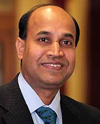The Landscape of IEEE Standards for eHealth
By Bill Ash and Sam Sciacca
Standards comprise a prime vehicle through which IEEE advances technology to the marketplace for the benefit of humanity. In no technology area is the value of standards more evident than in the quickly evolving space of eHealth.
An array of IEEE standards is at work around the world today, expanding support for interoperable medical-device communications and assisting healthcare product vendors and integrators in introducing devices and systems that can help save lives and improve quality of life. In addition to IEEE 11073™ and other standards designed specifically for technologies that support disease management, health and fitness and independent living, IEEE standards in areas such as the Internet, the smart grid and cloud computing are of interest because they enable the networks on which eHealth technologies and medical-device communications figure to increasingly rely.
IEEE standards “translate into far-ranging benefits, such as potentially reducing clinical decision-making from days to minutes, assisting consumers to independently manage their own health, reducing gaps and errors across the spectrum of healthcare delivery and helping to expand the potential market for the medical devices themselves,” said Dr. Alexander Kraus, therapy manager with Biotronik Health Services of Germany and a member of the IEEE 11073-10103 Working Group, in a 25 July 2012 IEEE Standards Association (IEEE-SA) press release. “The demand for more efficient and effective healthcare is fueling the healthcare provider IT (information technology) market worldwide. Consequently, these standards are urgently needed, and the prestige of IEEE conveys to them immediate global relevance.”
Defining Medical-device Communications
The IEEE 11073 family is intended to support communications among healthcare devices and external computer systems. The standards enable development of systems that collect real-time data on patient vital signs such as blood pressure and glucose and oxygen levels to inform care delivery (as well as operational data from medical devices to detect potential safety issues). In these ways, the IEEE 11073 standards support independent living, wellness and fitness.
The IEEE 11073 family has grown to number more than 20 standards. Some of the newest additions include the following:
- IEEE 11073-00103 “Guide for Health informatics – Personal health device communication – Overview,” which defines information profiles for interoperable communications between personal telehealth devices used for life activity and health/wellness monitoring in domestic home, communal home and/or mobile applications and computer engines such as health appliances, set-top boxes, cell phones and personal computers, and
- IEEE 11073-10103 “Standard for Health informatics – Point-of-care medical device communication – Nomenclature – Implantable device, cardiac,” which defines terminology for implantable pacemakers, defibrillators, devices for cardiac-resynchronization therapy and implantable cardiac monitors to support greater access to critical patient information and automated verification that clinical orders have been completed in a timely fashion – in turn, increasing quality of care and patient safety.
Evolution of the IEEE 11073 family continues. A host of standards-development projects is underway with the goal of defining plug-and-play, interoperable communications and a common core of communications functionality between various life-saving personal-health devices and computer engines:
- IEEE P11073-10404 Revision “Draft Standard for Health informatics – Personal health device communication – Device specialization – Pulse oximeter;”
- IEEE P11073-10413 “Draft Standard for Health informatics – Personal health device communication – Device specialization – Respiration rate monitor;”
- IEEE P11073-10419 “Draft Standard for Health informatics – Personal health device communication – Device specialization – Insulin pump;”
- IEEE P11073-10423 “Draft Standard for Health informatics -Personal health device communication – Device specialization – Sleep Monitor,” and
- IEEE P11073-10424 “Draft Standard for Health informatics – Personal health device communication – Device specialization – Sleep apnea breathing therapy equipment.”
Beyond the IEEE 11073 family, IEEE 2010™ “Recommended Practice for Neurofeedback Systems” proposes a detailed set of documentation requirements for neurofeedback instruments and software to optimize the quality and availability of information available to device users. Before publication of this IEEE recommended practice, there existed no stated set of minimum requirements for neurofeedback systems to ensure that operators could understand and interpret results.
Meanwhile, IEEE P3333.2 “Draft Standard for Three-Dimensional Model Creation Using Unprocessed 3D Medical Data” is being developed to establish minimum requirements for portability and consistent display of three-dimensional medical images across a multi-vendor array of imaging devices, including dedicated 3D display equipment, computers, mobile smart pads and smartphones.
Without such existing and in-development standards, data capture in medical-device communications can prove to be labor-intensive, expensive, impossible and/or error-ridden. Additionally, the effort can be marred by incompatibility in the information being exchanged, high costs and the inability to seamlessly deliver care based on the information that is collected. IEEE standards for medical-device communications, however, are deployed around the world today, supporting improvements in health, fitness and care; cost reductions in care delivery, and market expansion for eHealth technologies.
Standards Leadership in Related Technologies
As the standards and collaborative solutions arm of IEEE,the IEEE-SA provides unmatched access to technological scope. This translates into leadership in globally relevant standards at the intersections where eHealth capabilities touch other technology spaces, for example:
- IEEE 802® standards for physical-device connectivity, among others,enable the Internet to work consistently from one market to the next. IEEE 802.11™, for example, defines the technology for the world’s premier wireless LAN (WLAN) products. IEEE 802.11-based products are often branded as “Wi-Fi®” in the market.
- IEEE has an array of more than 100 active standards or standards in development with relevance to the smart grid, which seeks to overlay a two-way, end-to-end network for communications and control across the next-generation facility for electricity delivery. The smart grid figures to support entirely new service-delivery models across homes and businesses.
- The IEEE Cloud Computing Initiative, launched in 2011, was the first broad-scope, forward-looking cloud computing initiative to be put forth by a global standards-development organization(SDO).The effort kicked off with two standards-development projects designed to begin establishing a flexible,common framework for cloud-computing interoperability.
The Internet, smart grid and cloud computing are the foundation on which tomorrow’s eHealth capabilities will rely for secure, reliable and dependable transmission of life-saving information and services. IEEE is an international standards leader in all of those technology areas.
Conclusion
As eHealth evolves, challenges with consistency, interoperability, nomenclature and code continue to reveal themselves. The IEEE-SA addresses such challenges in part through collaboration with various healthcare organizations and SDOs globally.
For example, Continua Health Alliance and Health Level Seven International (HL7) are among the industry groups involved in the effort to help expand the impact of IEEE standards, through certification programs. Furthermore, coordination and cooperation across SDOs is necessary to ensure efficient rollout of a seamless framework of global eHealth standards. To this end, IEEE collaborates with the International Organization for Standardization (ISO), for example, in standards for medical-device communications.
A standards ecosystem is taking form around eHealth, and IEEE is a global leader.







 Nitish V. Thakor is a Professor of Biomedical Engineering at Johns Hopkins University, Baltimore, USA, as well as the Director of the newly formed institute for neurotechnology, SiNAPSE, at the National University of Singapore.
Nitish V. Thakor is a Professor of Biomedical Engineering at Johns Hopkins University, Baltimore, USA, as well as the Director of the newly formed institute for neurotechnology, SiNAPSE, at the National University of Singapore.  Jerrold L. Vitek is Professor and Head of the Department of Neurology at the University of Minnesota. Dr. Vitek received his medical degree as well as a doctorate of neurophysiology...
Jerrold L. Vitek is Professor and Head of the Department of Neurology at the University of Minnesota. Dr. Vitek received his medical degree as well as a doctorate of neurophysiology...  Subhas Mukhopadhyay graduated from the Department of Electrical Engineering, Jadavpur University, Calcutta, India with a Gold medal and received the...
Subhas Mukhopadhyay graduated from the Department of Electrical Engineering, Jadavpur University, Calcutta, India with a Gold medal and received the...  Nagender Suryadevara received his Bachelor of Technology degree in Computer Science and Engineering from Sri Krishnadevaraya University, Anantapur, India in 1996...
Nagender Suryadevara received his Bachelor of Technology degree in Computer Science and Engineering from Sri Krishnadevaraya University, Anantapur, India in 1996...  Dinesh Kumar graduated from IIT Madras, and later did his PhD from IIT and AIIMS, Delhi. After a successful stint in starting and running a high-tech venture...
Dinesh Kumar graduated from IIT Madras, and later did his PhD from IIT and AIIMS, Delhi. After a successful stint in starting and running a high-tech venture...  Bill Ash is Strategic Program Manager for the IEEE Standards Association (IEEE-SA). He received his BSEE from Rutgers University School of the Engineering.
Bill Ash is Strategic Program Manager for the IEEE Standards Association (IEEE-SA). He received his BSEE from Rutgers University School of the Engineering.  Samuel Sciacca is CEO of SCS Consulting, LLC. He is a registered Professional Engineer and an active Senior Member in IEEE and the IEC in the areas of utility automation...
Samuel Sciacca is CEO of SCS Consulting, LLC. He is a registered Professional Engineer and an active Senior Member in IEEE and the IEC in the areas of utility automation...